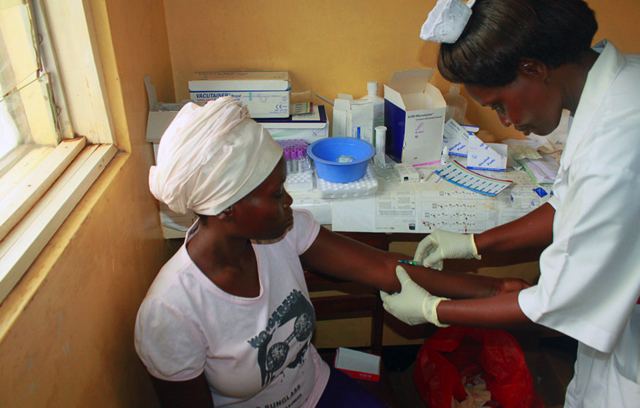
HIV experts want priority shifted to vulnerable groups
Kampala, Uganda | RONALD MUSOKE | As the world gears up to commemorate this year’s World AIDS Day which is celebrated every December 1, experts in the HIV prevention, treatment and research want the international community to focus and support more ‘priority populations’ by putting them on lifelong treatment.
The spotlight must be on identifying the remaining “last mile” barriers and focusing on the unique needs of the vulnerable populations, including those in what is said to be the most affected population of all— teenage girls.
The recommendation from the experts came during a recent virtual meeting organised by BroadReach Health Development, a group of social impact businesses focused on harnessing innovation and technology to empower human action in over 30 countries around the world.
For society to achieve epidemic control, priority must be given to key populations including men who avoid seeking medical help, vulnerable young girls, commercial sex workers, and members of the LGTBQI+ communities for whom it is difficult or even risky to seek help.
Annah Sango, the Advocacy Officer with Global Network of People Living with HIV in Zimbabwe, said it is very important to provide a choice to young women so that they can find the preventions or treatments that will work best for their personal situation. This, she said, includes pills, injections, vaginal rings, or access to male and female condoms.
“Choice means agency, which means protection. We need to solve issues of accessibility, availability, affordability, convenience, and community buy-in around HIV prevention and care for our most vulnerable populations,” Sango said.
Reaching adolescent women
“Today, the face of HIV in Africa is a young girl with a baby on her back, who, when faced with the difficult choice of self-care versus child-care, will always sacrifice her own health for her child,” said panelist Thanduxolo Doro, the People Living with HIV (PLHIV) Civil Society Leader and Project Management Specialist for USAID in South Africa.
Doro’s vivid illustration is actually backed-up by data. According to a recent UNAIDS report titled, “In Danger,” women and girls account for 63% of all new HIV infections in sub-Saharan Africa. Six out of seven new infections among 15–19-year-olds in the region were among girls.
In Uganda, for instance, adolescent girls are four to five times more likely to be HIV positive than the rest of the population, said Dr Andrew Kambugu, the Executive Director of the Uganda Infectious Disease Institute (IDI), a Makerere University-based non-profit that implements a large-scale President’s Emergency Plan For AIDS Relief (PEPFAR)-funded HIV programme in the country.
According to experts on HIV/AIDS, girls are at greater HIV risk if they engage in sex at a very young age, when they don’t have the power to negotiate condom-use, when they have multiple sexual partners, if they are repressed by patriarchal culture and gender-based violence (GBV), and if they have transactional relationships with sexual partners.
Dr Veni Naidu is the HIV Community Services Lead at BroadReach Health Development and oversees the DREAMS (Determined, Resilient, Empowered, AIDS-free and Safe) initiative for young women in South Africa. She told the virtual meeting that adolescent girls and young women are disproportionately vulnerable to HIV infection due to their socio-economic circumstances.
“Orphanhood is also a risk factor, because of a lack of guidance and higher risk of GBV,” said Naidu. “Girls are often reluctant to get tested or treated for HIV as they fear judgment from their parents, caregivers, peers and health workers.”
Needs of priority HIV/AIDS communities
Often breadwinners who cannot afford to spend the day in a clinic, men form part of the statistic that one in five Ugandans is HIV positive without knowing it.
Thanduxolo Doro who leads the USAID Mina (“Men” in isiZulu) initiative focused on men and their health and wellbeing, said cultural context was also important to consider.
“African men often feel pressure to be virile, strong, respected providers and protectors, and clinics can be stressful spaces. They may feel stripped of their power, patronized by one-directional counselling with terminology they don’t understand, such as ‘viral load,’ ‘transmissibility’ or ‘prophylaxis.’
Doro added: “We have to work from a point of empathy and inclusivity.”
One often overlooked and blamed group is adult men, for whom it is often practically challenging or embarrassing to visit clinics for HIV testing, treatment and care. In South Africa, adult men make up 37% of adults living with HIV.
“Stigma, shame, criminalization, and economic challenges are the greatest barriers to HIV prevention and care,” said Kambugu.
A crucial message for this year’s World AIDS Day is the ‘U=U’ (Undetectable = Untransmitable), highlighting the important message of hope that people who achieve viral suppression through adherence to their HIV/AIDS medications can live long and healthy lives. This, Doro said, is because viral suppression results in an undetectable viral load, meaning that HIV+ people can live freely, without the fear of transmitting HIV to others.
“I am living proof of this message of hope,” said Doro, who champions the MINA campaign to reach men at risk. “I’ve lived with HIV for 33 years, not only surviving but thriving, with a happy, virally suppressed life with my HIV-negative family. It is possible.”
There are also other key communities that need to hear this message, including sex workers and their clients, men who have sex with men, people who inject drugs, and transgender people and their sexual partners. Combined, they accounted for 70% of HIV infections globally and 51% of new infections in sub-Saharan Africa, according to UNAIDS.
These priority populations face barriers to access, ranging from stigma and education to language barrier, social injustice, criminalization (especially in countries where homosexuality is illegal), and economic and transport issues that make it hard for people to get to clinics. In order to overcome these challenges, the healthcare community needed to be innovative.
“We must think outside the box to reach key populations, for example through moonlight or drop-in clinics” said Kambugu, “For instance, we successfully reached the remote fishing communities on Lake Victoria through drone-powered drug deliveries.”
Overcoming HIV/AIDS in our lifetime
Kambugu said data proved that it was truly possible to reach epidemic control in our lifetime. “75% of all people living with HIV in Uganda have already reached viral suppression; it is possible in other countries too.”
For context, globally, according to a UNAIDS report, 59% living with HIV have reached viral suppression, while South Africa as a whole has reached 89%, according to South Africa’s Health Minister, Joe Phaahla.
To reach 100%, Kambugu believes Uganda needs to stop criminalising transactional and homosexual sex, so that these population groups can freely access HIV prevention and care. “We must adopt the spirit of Ubuntu, and build empathy into our policymaking.”
For hope to translate into results, Naidu believes better communication, more individualised models of care, and public-private collaborations must become the standard for all HIV prevention and care in Africa.
Adding to this, Sango believes all governments in Africa should include sex education in the school curricula. “We need to work tirelessly against inequality and lack of knowledge on all fronts,” she said.
HIV in Uganda
Currently, there are about 1.4 million people living with HIV in Uganda according to the “Status of the national HIV/AIDS response in Uganda,” report published by the Uganda AIDS Commission in 2021.
Disaggregated along gender, about 840,000 women aged 15 years and above are living with HIV while the number of men aged 15 years and above living with HIV are about 500,000. The same report notes that there are about 88,000 children (0-14 years) living with HIV in Uganda. As of December 2021, Uganda had registered 54,000 new infections including 6000 children.
Meanwhile, there are 17,000 AIDS-related deaths registered every year with more men (7100) aged 15 years and above dying of AIDS-related illness compared to women (6300). About 4000 children die of AIDS-related illness every year according to the Uganda AIDS Commission.
****
 The Independent Uganda: You get the Truth we Pay the Price
The Independent Uganda: You get the Truth we Pay the Price



